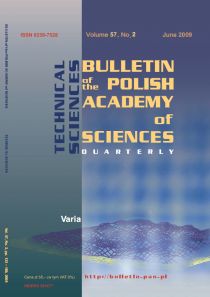POLISH ACADEMY of SCIENCES
TECHNICAL SCIENCES

| BULLETIN
of the
POLISH ACADEMY of SCIENCES TECHNICAL SCIENCES |
 |
|||
|---|---|---|---|---|
| Volume
58, Issue 3, September 2010
|
||||
| Issue Index | Authors Index | Scope Index | Web Info | |
|
|
||||
| Aims&Scope, Subscription | Editors | Authors' guide | to read PDF files | mirror: http://fluid.ippt.gov.pl/~bulletin/ |
| pp 435 - 441 |
|---|
|
Cellular automata model of self-organizing traffic control in urban networks |
|---|
| J.SZKLARSKI |
| A model of city traffic based on Nagel-Schreckenberg cellular automaton (CA) model is presented. Traffic control is realized at intersections with two conflicting streams each (at any time at most one stream can have "green light" assigned to it). For simple and regular lattice-like networks which are considered, it is easy to find optimal switching periods giving maximum possible flow rates. These optimal strategies are compared with a self-controlling approach proposed by [1], which has not been implemented in a CA model until now. Previous work proved that generally this method gives superior results when compared to classical methods. In this paper we show that for deterministic scenario such control leads to self-organization, and that the solution always quickly converges to the optimal solution which is known in this case. Moreover, we consider also non-deterministic case, in the sense that possibility of turning with given probability is allowed. It is shown that the self-controlling strategy always gives better results than any solution based on fixed cycles with green waves. |
| Key words: |
|
cellular automata model, self-organizing traffic control, urban networks |
|
|
| Issue Index | Authors Index | Scope Index | Web Info |
|---|---|---|---|
|
|
|||
| Aims&Scope, Subscription | Editors | Authors' guide | to read PDF files |
| Copyright ® Bulletin of the Polish Academy of Sciences: Technical Sciences |
|---|